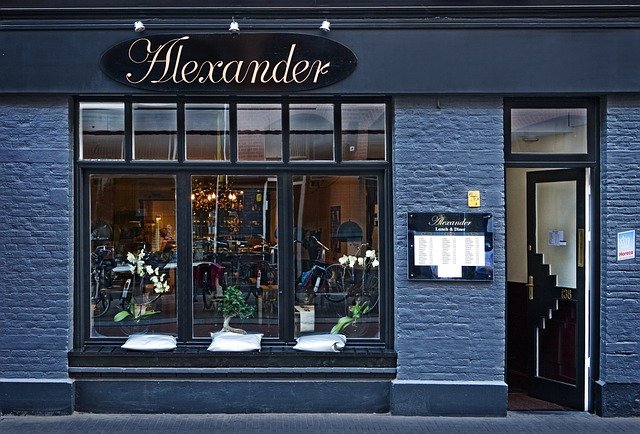Measuring Return on Investment for Store Site Selection
Choosing the right retail address is central to measuring return on investment for store site selection. This article outlines practical metrics and steps to quantify how storefront visibility, leasing terms, location, zoning, footfall, demographics, fitout costs, and contract details influence profitability and long‑term value.

Selecting a storefront involves more than assessing a lease price on paper; it requires quantifying how physical location and commercial terms convert to sales, margin, and long‑term value. Measuring ROI for store site selection means blending hard metrics—footfall counts, traffic patterns, lease length, and fitout budgets—with qualitative factors such as visibility, signage, and local compliance. A reproducible approach helps compare options objectively and supports negotiations over tenancy, contract clauses, and tenant improvement allowances.
How does storefront visibility affect ROI?
Visibility determines how easily potential customers notice your store from passing traffic and pedestrian routes. Good visibility increases spontaneous visits and reduces spend on paid marketing. Measure sightlines, signage impact, and frontage width, then estimate additional weekly footfall from enhanced visibility. Factor in signage compliance rules and local permits when modelling the incremental sales needed to cover sign installation and any recurring advertising spend tied to the storefront.
How do location and traffic influence returns?
Location ties directly to the quality and quantity of passing traffic. Distinguish between vehicle traffic and pedestrian traffic; a high-traffic road with low pedestrian access will perform differently than a busy high street. Use origin–destination traffic data and peak-hour counts to forecast conversion rates. Consider proximity to anchor tenants, public transport links, and parking availability—each affects average transaction value and frequency, which are core inputs for ROI models.
What leasing and tenancy factors matter?
Lease terms shape cash flow and risk. Key items include lease length, escalation clauses, rent-free periods, and tenant repair responsibilities. Understand the difference between gross and net leases and whether the contract shifts property taxes, insurance, or maintenance costs to the tenant. Model different lease scenarios to determine break‑even sales per square foot and how tenancy obligations affect short‑ and long‑term return calculations.
How do zoning and compliance impact site choice?
Zoning determines permitted uses, operating hours, and signage allowances. Compliance requirements can add direct costs (special permits, accessibility upgrades, environmental remediation) or restrict potential revenue streams (prohibiting certain retail categories). Verify local zoning classifications and required approvals early; potential compliance costs should be included in the ROI model as one‑time capital expenditures or recurring operating constraints that reduce usable trading hours.
What budget and fitout costs affect ROI?
Estimate upfront fitout, fixtures, and signage costs alongside ongoing operating expenses. Fitout choices—modular displays versus custom builds—change initial capital needs and flexibility of the tenancy. Include budgeting for utilities, local taxes, and potential conversion or refurbishment if moving between tenancy types. Calculate payback periods for fitout investments by dividing incremental monthly gross margin attributable to the fitout by the total fitout spend.
Before the table, practical cost benchmarks help ground ROI scenarios: prime high‑street retail in major cities commonly demands higher rents per square foot and larger fitout budgets, while secondary centres and suburban strips typically require lower rents but may yield different customer mixes. Brokerage and listing services can support market comparables; tenant improvement allowances or rent‑free periods are frequent negotiation points that materially affect short‑term ROI assumptions.
| Product/Service | Provider | Cost Estimation |
|---|---|---|
| Commercial retail listings and market comparables | LoopNet (CoStar Group) | Market rents vary widely by market; example U.S. ranges: $20–$300 per sq ft per year depending on location and centre type |
| Brokerage and tenant representation | CBRE | Brokerage fees typically negotiated; landlords or tenants may incur fees equivalent to a percentage of lease value or fixed retainer (varies by market) |
| Retail leasing advisory and site selection analytics | JLL | Advisory fees vary; subscription or project fees common—cost depends on scope, from a few thousand to tens of thousands for multi‑site strategies |
Prices, rates, or cost estimates mentioned in this article are based on the latest available information but may change over time. Independent research is advised before making financial decisions.
How to measure and forecast ROI from storefront data?
Combine baseline financial metrics—rent, expected sales per square foot, gross margin percentage, and operating costs—into a simple ROI model. Project sales using footfall and demographic conversion estimates, then subtract lease and operating costs to get net profit per period. Use sensitivity analysis to test different traffic levels, lease escalation scenarios, and fitout amortisation timelines. Track actual performance after opening to refine conversion rates and update forecasts for future site selections.
Selecting a site for rent requires merging real estate diligence with retail economics. By systematically evaluating storefront visibility, leasing and contract specifics, location and traffic, zoning and compliance, and fitout and budget needs, you can construct comparative ROI models that support clear decisions. Regularly update assumptions with local market data and post‑opening performance to improve accuracy for subsequent site selections.






